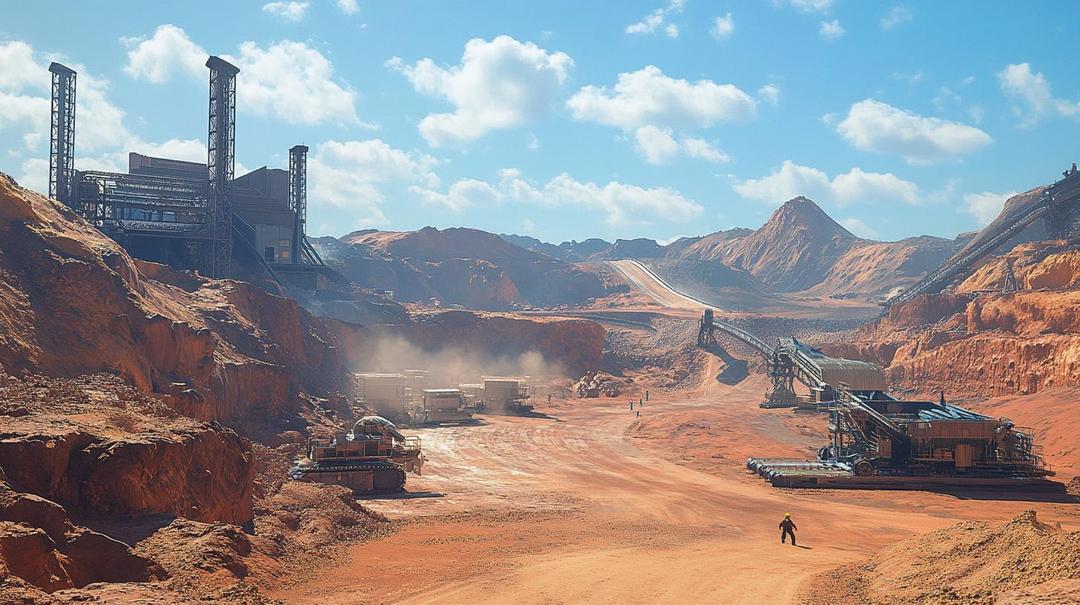As the world shifts towards electrification and renewable energy, rare earth elements take center stage in powering wind turbines, electric vehicles, and much more. Australia has emerged as a global leader in this sector, but not without its challenges.
Let’s dig in (pun intended)!
What's Inside
What Is Rare Earth Mining and Why Is It Important?
Rare earth elements (REEs) are a group of 17 metallic elements crucial to modern technology despite their relatively abundant presence in the Earth’s crust. These elements play a pivotal role in numerous high-tech applications, from renewable energy systems to advanced electronics and defense technologies.
The Critical Nature of Rare Earth Elements
REEs are essential components in:
- Electric vehicle (EV) batteries and motors
- Wind turbine generators
- Smartphone and computer components
- Advanced defense systems and guidance technologies
- Powerful permanent magnets used in various industrial applications
The mining process for these elements is extraordinarily complex and resource-intensive. Unlike traditional mineral extraction, rare earth mining involves intricate separation techniques and significant environmental challenges, making it a technically demanding and expensive endeavor.
Australia’s Role in the Global Rare Earth Supply Chain
Australia has emerged as a significant player in the global rare earth market, positioning itself as a strategic and reliable alternative to dominant producers like China.
Production and Export Highlights
- Represents approximately 10-15% of global rare earth production
- Home to major projects like Lynas Corporation’s Mount Weld mine
- Recognized for political stability and robust regulatory frameworks
Strategic Positioning
Australia’s rare earth sector offers a geopolitically secure supply chain for countries seeking alternatives to Chinese dominance, particularly for the United States and Japanese markets.
Key Trends and Developments in Rare Earth Mining (2024)
The rare earth mining landscape is experiencing rapid transformation driven by several key factors:
Market Demand Drivers
- Exponential growth in renewable energy technologies
- Accelerating electric vehicle manufacturing
- Increasing demand for advanced electronics and defense systems
Investment and Innovation
- Significant capital investments in Australian rare earth exploration projects
- Emerging extraction technologies reducing environmental impact
- Development of more efficient recycling processes
- Government initiatives supporting technological innovation
Environmental Impacts and Regulatory Frameworks
Rare earth mining presents substantial environmental challenges that require careful management and innovative solutions.
Key Environmental Considerations
- Potential radioactive byproduct generation
- Extensive water resource consumption
- Landscape and habitat disruption
- Chemical processing complexities
Mitigation Strategies
- Stringent Australian environmental regulations
- Comprehensive environmental impact assessments
- Engagement with indigenous communities
- Implementation of sustainable mining practices
- Progressive rehabilitation of mining sites
Economic Opportunities for Australia
The rare earth mining sector represents a significant economic opportunity for Australia, offering multiple strategic advantages:
Economic Benefits
- Job creation in regional mining communities
- Attraction of international investment
- Diversification of national export capabilities
- Technology and skills development
Strategic Challenges
- Balancing economic growth with environmental sustainability
- Maintaining competitive global positioning
- Continuous technological innovation
Geopolitical Challenges in the Rare Earth Sector
Australia’s rare earth industry is increasingly defined by complex geopolitical dynamics:
Global Market Positioning
- Emerging as a reliable alternative to Chinese rare earth dominance
- Strategic partner for countries seeking diversified supply chains
- Potential for strengthened international trade relationships
Risk Management
- Navigating global trade tensions
- Developing robust international partnerships
- Maintaining technological and regulatory competitiveness
The Future of Rare Earth Mining in Australia
The sector’s future hinges on continuous innovation, sustainable practices, and strategic investments:
Projected Developments
- Anticipated demand growth in green technologies
- Advanced extraction and processing technologies
- Enhanced recycling methodologies
- Increased focus on environmental stewardship
The industry stands at a critical intersection of technological innovation, environmental responsibility, and economic opportunity.
Conclusion
Australia’s rare earth mining industry is pivotal not only for the nation’s economic prosperity but also for advancing global technological and environmental goals. As demand for rare earth elements skyrockets, Australia must continue innovating while addressing environmental and geopolitical challenges.
FAQs
What are rare earth elements, and why are they critical?
Rare earth elements (REEs) are a group of 17 metals used in high-tech applications, including renewable energy technologies, defense systems, and electronics. They are critical for the global transition to greener technologies like wind turbines and electric vehicles.
Which countries are the largest producers of rare earth elements?
China is the dominant producer, accounting for over 70% of global production. Australia comes next as a key supplier, with significant expansions underway to challenge China’s dominance.
What are the environmental impacts of rare earth mining?
Rare earth mining can cause environmental damage, including radioactive waste, water pollution, and excessive energy usage. Mitigating these impacts is a top priority in regulatory frameworks and company practices.
How does Australia regulate its rare earth mining industry?
Australia enforces strict environmental and safety regulations to minimize harm from rare earth mining. These guidelines include managing radioactive byproducts and requiring comprehensive environmental impact assessments.
What is the future outlook for Australia’s rare earth industry?
Australia’s rare earth industry is poised for growth, fueled by increasing demand for renewable energy and electric vehicles. Future developments may focus on sustainable mining practices and recycling technologies.


Dustin
Driven by a fascination with rare earth elements and their role in powering modern tech and engineering marvels. A true car and tech enthusiast, he loves exploring how these hidden heroes fuel our most exciting innovations.
You Might Also Like…